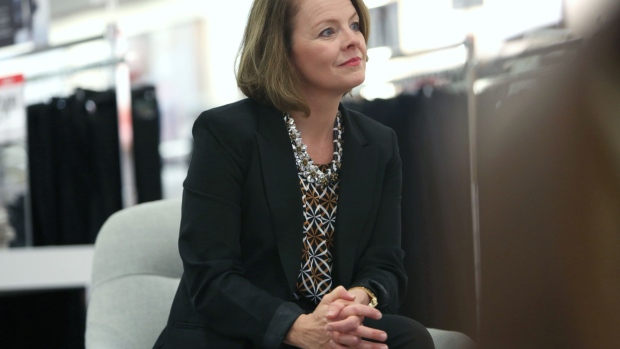Dec 30, 2021
JCPenney's Jill Soltau is out as retailer's new owners split company
, Bloomberg News

The new owners of JCPenney replaced Chief Executive Officer Jill Soltau less than a month after re-launching the department store chain that went bankrupt during the pandemic.
Soltau will depart Dec. 31 and be succeeded by Stanley Shashoua, the chief investment officer of Simon Property Group Inc., while a search for a new CEO is conducted, according to a statement Wednesday. Mall owners Simon and Brookfield Asset Management Inc. acquired the retail operations of J.C. Penney Co. to help keep one of their biggest tenants in business. The brief, two-paragraph announcement gave no explanation for the CEO change.
The departure is another burden for the struggling department store chain, which made rapid-fire leadership changes over the past decade as a series of turnaround plans fell short. While it wouldn’t be unusual for new owners to bring in a new leader, restarting the process could hurt JCPenney as it tries to right the company, said David Swartz, equity analyst at Morningstar Inc.
“It’s not great news,” Swartz said.
Turnaround Plan
Soltau, hired in October 2018, was in the middle of overseeing her own turnaround plan and putting a new team in place when the COVID-19 pandemic swept the globe this year and temporarily shuttered many retail stores. By May, J.C. Penney Co. was bankrupt. She remained in the top job throughout the bankruptcy process, and the new owners highlighted her comments as CEO in the Dec. 7 announcement of the relaunch under the JCPenney name.
Simon and Brookfield plan to establish a temporary office of the CEO that will include members of JCPenney’s current management team, according to the statement. J.C. Penney Co. was split up during the bankruptcy into the operating company, which is owned by the mall operators, while lenders get the property company. The latter remains in the Chapter 11 process and is expected to emerge in the first half of 2021.
Penney’s troubles were longstanding before Soltau’s arrival. She became the company’s fifth CEO in seven years -- fourth if you count Mike Ullman’s reprise tenure -- in an effort to make the mall stalwart a more compelling destination. The carousel started in 2011 when activist investor William Ackman pushed for Ullman’s ouster in favor of Ron Johnson, fresh off triumphs at Target Corp. and Apple stores.
Previous Plan
Johnson envisioned not so much a turnaround as a wholesale refabrication of the company. At a splashy event by the Hudson River introducing his plan, he vowed to end the cycle of endless sales and instead train customers to buy at fair prices. He redesigned stores to feature boutique brands built around a so-called town square. Sales in his first year plunged 25 per cent and in 2013, the company replaced him with Ullman after less than two years.
Marvin Ellison, who took over after Ullman retired, left to become CEO at Lowe’s Cos. after less than two years.
Soltau came over from leading craft chain Jo-Ann Stores Inc., and before that was an executive at now-defunct Midwestern department store chain Shopko Stores Inc. Soltau worked to improve inventory management and lure more shoppers by revamping merchandise.
There were signs of progress when the company reported its year-end earnings in late February, with improved women’s clothing sales and better-than-expected results.
Now, as an intensifying pandemic threatens more disruption and store closings, “it would be much smoother” if Soltau could continue steering the turnaround, or if the company had a plan in place, Swartz said.